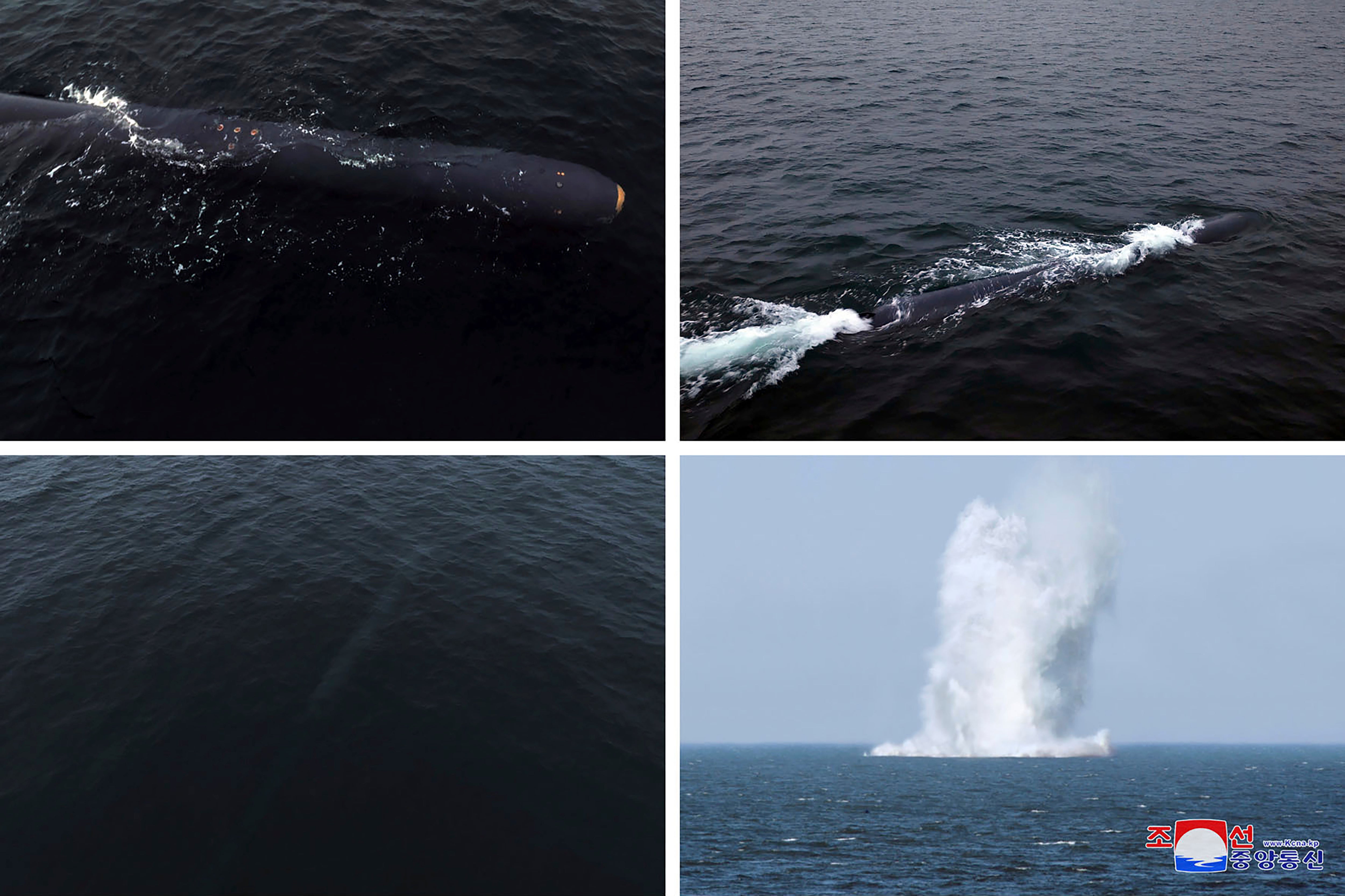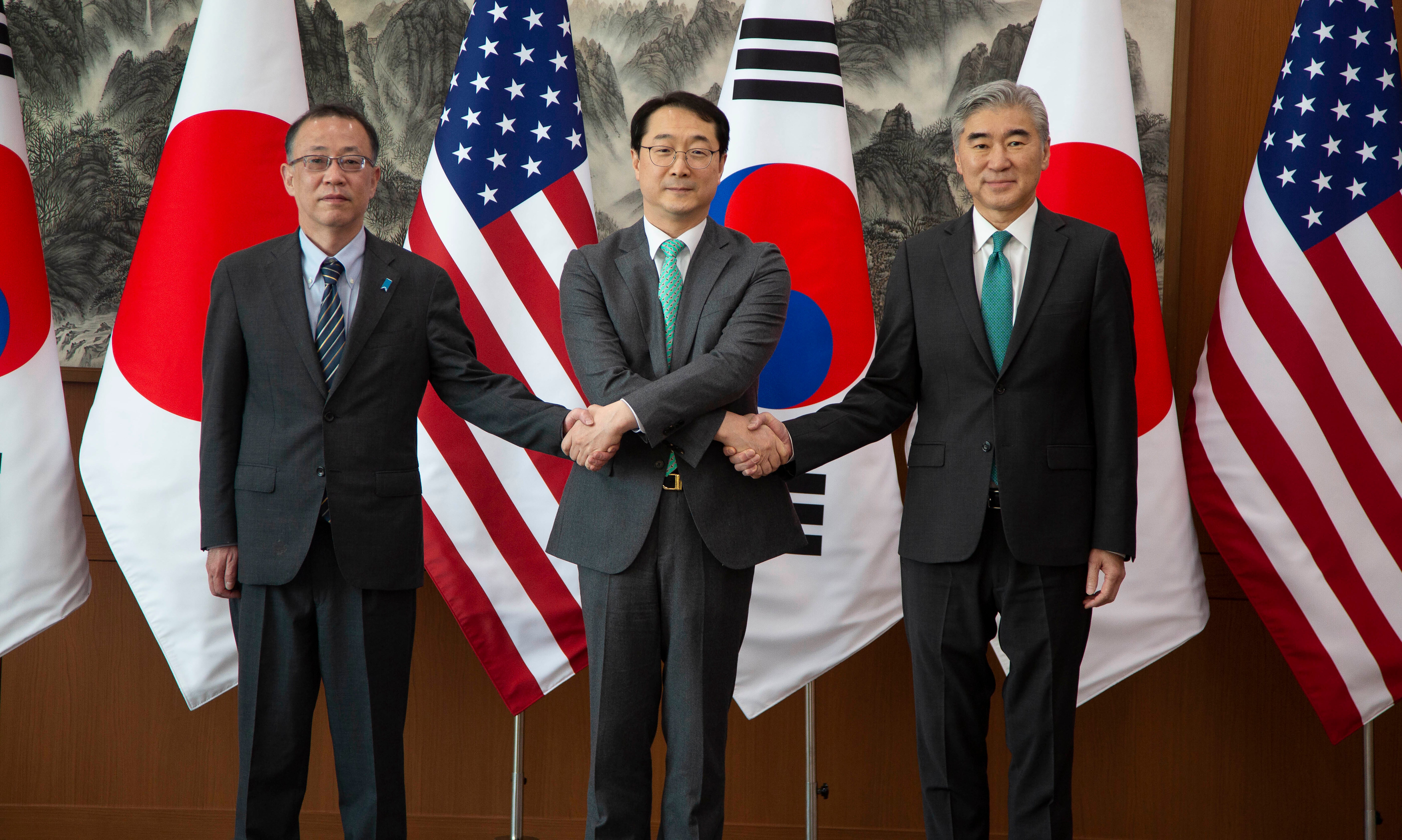North Korea tests nuclear-capable underwater attack drone with ‘fatal attack ability’
‘Haeil’ is designed to destroy ports and decimate naval fleets

Your support helps us to tell the story
From reproductive rights to climate change to Big Tech, The Independent is on the ground when the story is developing. Whether it's investigating the financials of Elon Musk's pro-Trump PAC or producing our latest documentary, 'The A Word', which shines a light on the American women fighting for reproductive rights, we know how important it is to parse out the facts from the messaging.
At such a critical moment in US history, we need reporters on the ground. Your donation allows us to keep sending journalists to speak to both sides of the story.
The Independent is trusted by Americans across the entire political spectrum. And unlike many other quality news outlets, we choose not to lock Americans out of our reporting and analysis with paywalls. We believe quality journalism should be available to everyone, paid for by those who can afford it.
Your support makes all the difference.North Korea has tested a new version of an underwater nuclear-capable attack drone.
The drone test is the latest in a flurry of other weapon tests carried out by the North in the wake of US-led drills being carried out in the Korean peninsula.
The tests of the underwater drone were carried out in the span of four days, between 4 and 7 April, the state-run Korean Central News Agency said on Saturday.
The tests were carried out just a little more than a week after the Kim Jong-un regime tested the first version of the drone, called “Haeil” – a Korean word meaning tidal waves or tsunamis.
North Korea claims “Haeil-1”, tested at the end of March, can set off a “super-scale radioactive tsunami” that is designed to destroy ports and decimate naval fleets.
“Haeil-1” had cruised for about 59 hours, according to KCNA, and was detonated under a mock enemy port off Hongwon Bay between the east coast cities of Hamhung and Sinpho.
In contrast, tests for “Haeil-2” this month had the drone stay underwater for 71 hours and six minutes and cruise for 1,000km.

“Haeil-2” also successfully detonated a mock warhead in waters near the eastern port city of Tanchon on Friday, said KCNA.
“The test perfectly proved the reliability of the underwater strategic weapon system and its fatal attack ability,” KCNA said.
The state-run news agency released photographs of the drone, which looks like a large, dark-coloured torpedo-shaped object.
Also released were tracks of the object’s underwater trajectory and a blast visible on the sea surface.
Analysts, however, were sceptical about the drone after “Haeil-1” was tested in March.
Ankit Panda, a nuclear weapons specialist at the Carnegie Endowment for International Peace, had raised questions over the North’s claims after the first test.
“This uncrewed underwater vehicle will be vulnerable to anti-submarine warfare capabilities if it were to deploy beyond North Korea‘s coastal waters. It will also be susceptible to preemptive strikes when in port,” he had said.
The KCNA report announcing the four-day test came just a day after Joe Biden’s special representative for North Korea met with his South Korean and Japanese counterparts in Seoul.
They issued a joint statement for stronger international support to counter North Korea.
The North had on Thursday warned the West of “offensive action” over the expansion of US military exercises with South Korea. A day before the warning, the US flew nuclear-capable B-52 bombers to the Korean Peninsula for joint aerial exercises with South Korean warplanes.
In 2023 alone, North Korea fired around 30 missiles in 11 different launch events. These included an intercontinental ballistic missile capable of reaching the US mainland and shorter range, nuclear-capable weapons designed to hit targets on its neighbour.
Join our commenting forum
Join thought-provoking conversations, follow other Independent readers and see their replies
0Comments